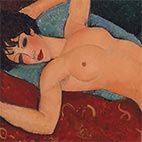
Surrealism, Expressionism, Nabis & Other Styles Artists Index
Alphabetical Index of the Great Masters of the Surrealism, Expressionism, Nabis & Other Styles
Surrealism is an artistic and literary movement that emerged in the 1920s, characterized by its use of unexpected juxtapositions, dreamlike imagery, and an exploration of the unconscious mind. It was heavily influenced by the theories of Sigmund Freud and was intended to challenge traditional notions of art and reality. Salvador Dali, Rene Magritte, and Max Ernst are some of the most famous artists associated with the Surrealist movement.
Expressionism, on the other hand, was a modernist movement that emerged in Germany and Austria in the early 20th century. It is characterized by its use of intense color, exaggerated forms, and emotional expressiveness. Expressionist artists sought to convey their subjective feelings and experiences through their work, often using distorted or stylized forms to achieve this effect. Edvard Munch, Ernst Ludwig Kirchner, and Wassily Kandinsky are some of the most famous Expressionist artists.
Nabis was a group of artists in France in the late 19th century who were associated with the Symbolist movement. The term "Nabis" comes from the Hebrew word for "prophets," and the group was characterized by its interest in spirituality, mysticism, and the decorative arts. Nabis artists often used flat, simplified forms and bold colors in their work, and they were heavily influenced by Japanese prints and other non-Western art forms. Pierre Bonnard and Edouard Vuillard were two of the most important members of the Nabis group.
Overall, these three movements all represent significant departures from traditional artistic conventions and have had a lasting impact on the history of art.
Expressionism, on the other hand, was a modernist movement that emerged in Germany and Austria in the early 20th century. It is characterized by its use of intense color, exaggerated forms, and emotional expressiveness. Expressionist artists sought to convey their subjective feelings and experiences through their work, often using distorted or stylized forms to achieve this effect. Edvard Munch, Ernst Ludwig Kirchner, and Wassily Kandinsky are some of the most famous Expressionist artists.
Nabis was a group of artists in France in the late 19th century who were associated with the Symbolist movement. The term "Nabis" comes from the Hebrew word for "prophets," and the group was characterized by its interest in spirituality, mysticism, and the decorative arts. Nabis artists often used flat, simplified forms and bold colors in their work, and they were heavily influenced by Japanese prints and other non-Western art forms. Pierre Bonnard and Edouard Vuillard were two of the most important members of the Nabis group.
Overall, these three movements all represent significant departures from traditional artistic conventions and have had a lasting impact on the history of art.